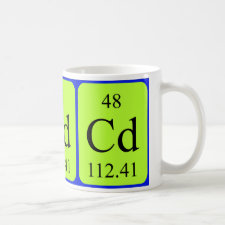
Authors: Felix CSA, Barreto JA, Novaes CG, Amorim FAC, Lemos VA, Andrade HMC, da Silva EGP
Article Title: Application of a Novel Ion-Imprinted Polymer to the Separation of Traces of CdII Ions in Natural Water: Optimization by Box-Behnken Design.
Publication date: 2019
Journal: Journal of the Brazilian Chemical Society
Volume: 30
Issue: (4)
Page numbers: 873-881.
DOI: 10.21577/0103-5053.20180224
Abstract: This study describes the preparation of a novel ion-imprinted polymer (IIP) to apply preconcentration of cadmium ions in water samples of the Pontal Bay in Ilhéus, Brazil. First, cadmium ion was complexed with 2-(2-thiazolylazo)-p-cresol (TAC). Subsequently, there was the polymerization using ethylene glycol dimethacrylate and methacrylic acid monomers along with the radical azobisisobutyronitrile initiator. The mold ions were removed using 2:1 (v v-1) nitric acid. The thermal stability of the polymer was evaluated by thermogravimetry and the characterization was performed by Fourier transform infrared spectroscopy. The maximum adsorption capacity for IIP (qmax = 84.75 mg g-1) could be described by the Langmuir isotherm. The variables: sample flow rate, pH and eluent (nitric acid) were optimized using Box-Behnken design with determination by flame atomic absorption spectrometry (FAAS). The enrichment factor, as well as the limits of detection and quantification (LOQ), were found to be 44, 0.14 and 0.46 μg L-1, respectively. Selectivity was evaluated by using solutions containing CdII, CuII, NiII, PbII, CoII, SO4 2-, and Clions. The concentration of cadmium ions in the samples varied between < LOQ to 1.25 μg L-1.
Template and target information: cadmium ion, Cd(II)
Author keywords: Ion-imprinted polymer, pre-concentration, Box-Behnken design, cadmium, Natural water



Join the Society for Molecular Imprinting

New items RSS feed
Sign-up for e-mail updates:
Choose between receiving an occasional newsletter or more frequent e-mail alerts.
Click here to go to the sign-up page.
Is your name elemental or peptidic? Enter your name and find out by clicking either of the buttons below!
Other products you may like:
 MIPdatabase
MIPdatabase









